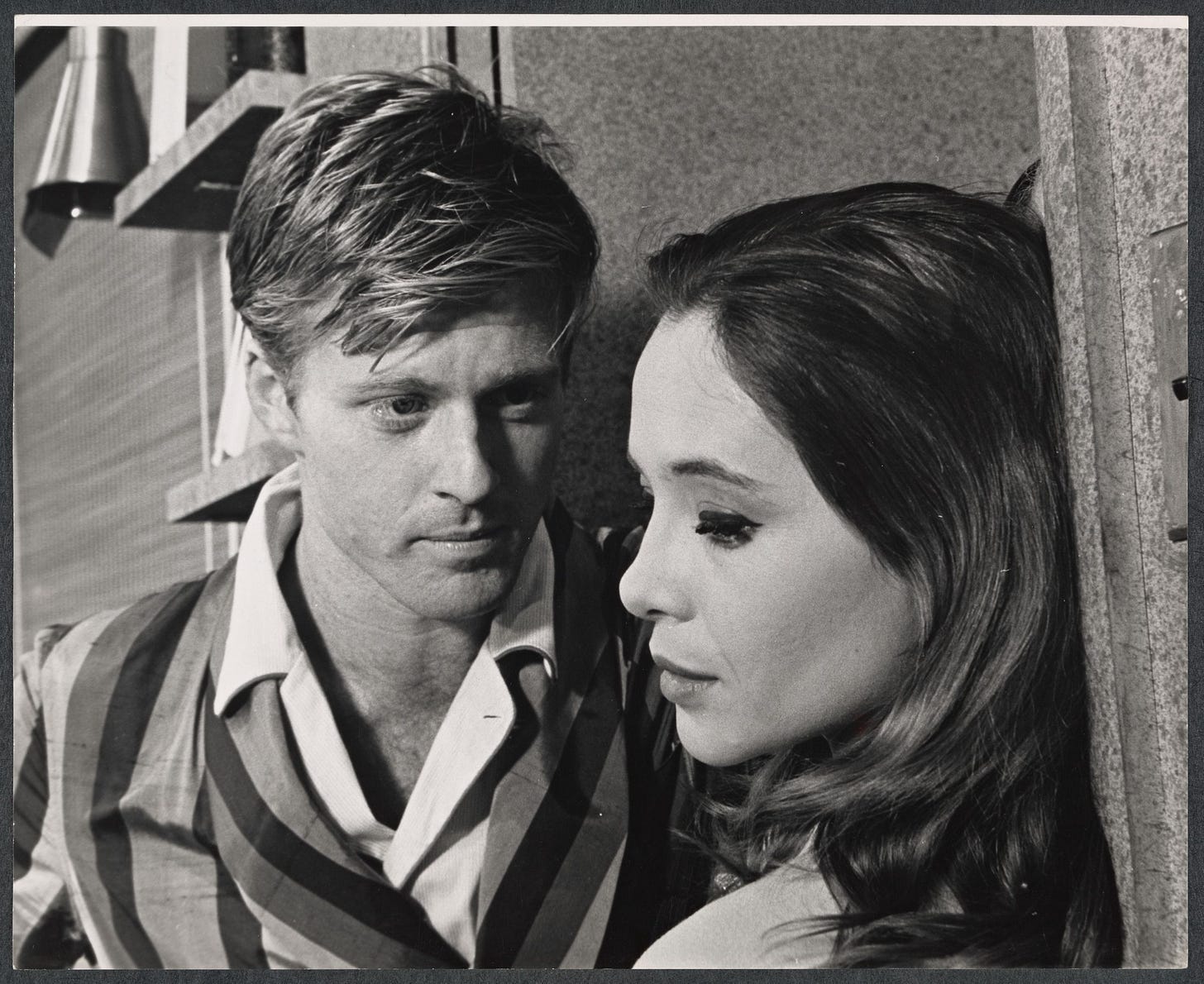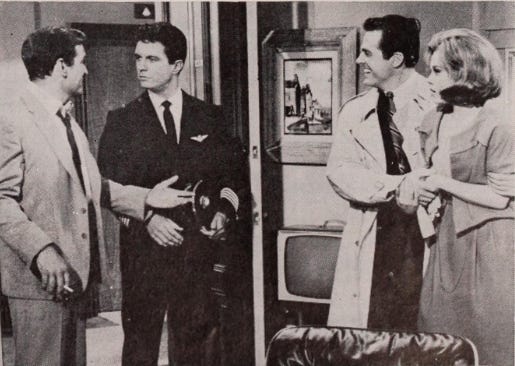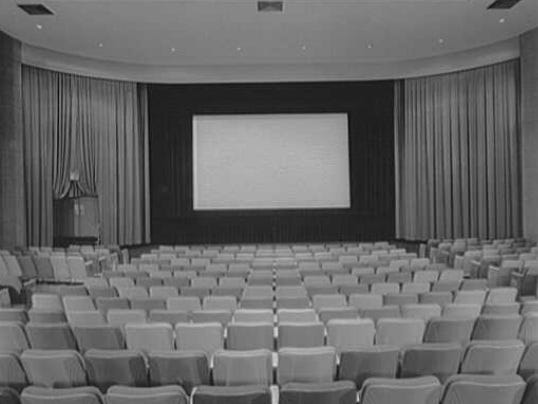Sunday in New York (1964)
Released at various theaters across New York City on February 11, 1964
A movie about love and virginity, Sunday in New York is the ultimate 1960s purity tale. Complete with a bachelor pilot brother, a classic rom com misunderstanding, and a naive out-of-towner who comes to the “dirty city,” which almost corrupts her, this film has all the fixings of a studio romance produced for mass appeal.
Sunday in New York
Director: Peter Tewksbury; Writer: Norman Krasna; Based on the Stage Play by: Norman Krasna; Producer: Everett Freeman; Cinematographer: Leo Tover; Editor: Fredric Steinkamp; Music: Peter Nero; Cast: Cliff Robertson, Jane Fonda, Rod Taylor, Robert Culp, Jo Morrow, Jim Backus
Released by Metro-Goldwyn-Mayer in association with Seven Arts Productions across New York City on February 11, 1964
Runtime: 105 minutes
★★★1/2
An innocent young woman arrives in NY to find love. Routine sex farce from Norman Krasna’s play makes a nice vehicle for fresh, charming Fonda.
Sunday in New York entry. Blockbuster Entertainment. Guide to Movies and Videos 1998.
Sunday in New York was originally a stage play written by Norman Krasna who also scripted the film adaptation. The play opened at the Court Theatre (now the James Earl Jones Theatre) on 48th Street, between Seventh Avenue and Sixth Avenue on November 29, 1961. The New York Times review by theater critic Howard Taubman supposed, “If you like escapism you will find it amiable. If you prefer plays in which even young adults are at least as mature as late adolescents, you will find it a mild, trivial fairytale.” The original cast starred Pat Stanley and Robert Redford as romantic leads.

Images from the production and rehearsal are available in the New York Public Library’s Digital Collections Database in the Friedman-Abeles Photographs Collection, which “contains work from the partnership of Leo and Sy Friedman and Joseph Abeles, together the pre-eminent firm documenting Broadway theater productions in the 1950s-1970s.”

The director/producer team of Peter Tewksbury and Everett Freeman had previously worked together on television programs such as “Father Knows Best” and “Bachelor Father” before teaming up again on Sunday in New York. Freeman made a four-picture deal with Seven Arts Productions, which called for “a minimum of two films a year over the next five years.” Sunday in New York was the first film of the deal followed by a film called “Honeymoon” that seems to have never been released.
Originally scheduled for the entire production to be shot in New York City, after an initial location shot in the city, the production returned to MGM’s studio in Culver City for interior and some final exterior scenes. The film features scenes shot in Central Park, Penn Station, and The Rink at Rockefeller Center.
As promotion for the film, the publicity team at MGM partnered with TWA, the major airline at the time with a hub in New York City. The film was shown onboard domestic and international flights weeks before its theatrical premiere. Scenes from the film were also featured in TWA television commercials.
Another advertising push came in the classic 1960s form of a promotional contest to fly someone who had never been on an airplane or been to New York City for a “Sunday in New York.” The winner, a 63-year-old grandmother who had never left her home state of Florida, was shown around “from the Battery to the Bronx, from the subway to the top of the Empire State Building, to lunch at an atmospheric Greenwich Village restaurant, to dinner at Sardi’s East, [they] hosted a party in her honor in Rockefeller Center, took her to the World’s Fair site where the World’s Fair publicity committee provided AP coverage.”
The film showed at the Forum on Broadway and 47th Street and the Loew’s Tower East on 3rd Avenue and 72nd Street in Manhattan. It also showed at 3 theaters in Brooklyn, 2 theaters in the Bronx, and 3 theaters in Queens, as well as on screens in Westchester County, Nassau County, Suffolk County, and New Jersey as advertised in the New York Times. This expansion to suburban theaters was a new trend initiated by United Artists with their “Premiere Showcase Plans” which included releasing their more bankable productions to wider audiences in a greater span of theaters. After an abysmal year for MGM, they switched their release strategy for Sunday in New York to include “not only to a number of deluxe neighborhood theatres but would penetrate even deeper into the key suburban theatres of the outlying areas,” starting with New York. This began talks with theater chains like RKO and Loew’s about the possibility of partnering for wider releases across all of their locations. This came after a massive restructuring and uptick in MGM’s operations, “doubl[ing] its working force, with more than 3,000 now… the payroll” and 36 productions set for 1963.
The Film Bulletin Magazine’s review headline read, “Lively, youthful romantic-comedy, with clean sex overtones, should have strong appeal for wide audience. Cheerful entry, in color.” Followed by, “Its fresh approach to an old theme—is virginity worth the trouble it causes?… Krasna's bright, brittle, and occasionally farcical screenplay, while sex-oriented, maintains an upright moral tone and is never in bad taste.”
In reference to the film’s subject matter that so obviously called attention to the Production Code debates at the time, New York Times film critic Bosley Crowther wrote in his review:
If there weren’t such a thing as a young woman’s virtue Norman Krasna would surely have invented it, so indispensable is it to many of the plays and screenplays he writes. He certainly makes a lot more fuss about it than do the administrators of the film industry’s Production Code, which is one reason why we are now seeing a frank screen version of his “Sunday in New York.”
There once was a time when the candor of Mr. Krasna’s mildly popular Broadway play about an Albany girl who struggles bravely with the problem of her virtue during a rainy afternoon in New York might have caused the Production Code people a moment or two of anxious pause. They might then have thought it a bit too racy for youthful and innocent ears. But that was before the air was shattered by the mention of virginity in “The Moon Is Blue.” For the past 10 years, the once-unmentionable has been discussed at almost tedious length in films.
On the film’s merit, Crowther wrote, “The twists of the plot are downright hackneyed—the confusions of opening the wrong door, mistaking people and getting caught in dishabille. But the actors are all attractive, and so long as one can go along with them in their valiant attempts at pretending this is hot stuff, one may have a good time.”
Pianist Peter Nero composed and recorded an album for the film with the title track “Sunday in New York,” which was originally released on RCA Records.
You can watch Sunday in New York on Max.
More romance to come…
xx Paris








